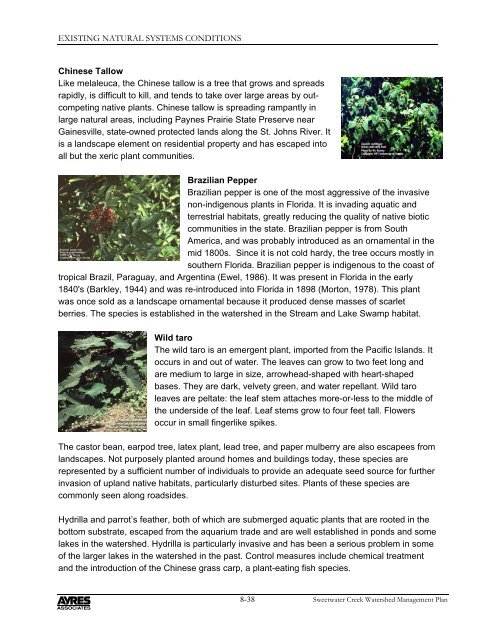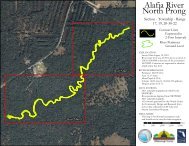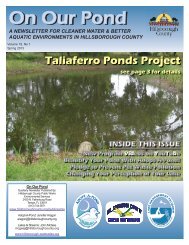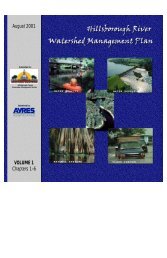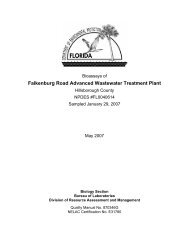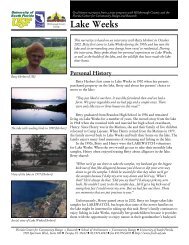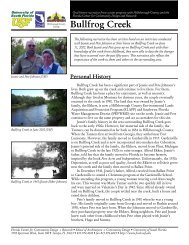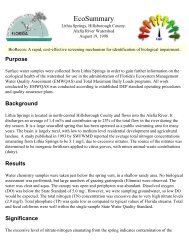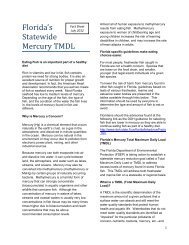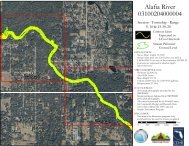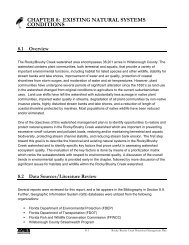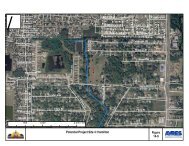Sweetwater Creek Watershed Mgmt. Plan 2007 Update--Part 2
Sweetwater Creek Watershed Mgmt. Plan 2007 Update--Part 2
Sweetwater Creek Watershed Mgmt. Plan 2007 Update--Part 2
Create successful ePaper yourself
Turn your PDF publications into a flip-book with our unique Google optimized e-Paper software.
EXISTING NATURAL SYSTEMS CONDITIONS<br />
Chinese Tallow<br />
Like melaleuca, the Chinese tallow is a tree that grows and spreads<br />
rapidly, is difficult to kill, and tends to take over large areas by outcompeting<br />
native plants. Chinese tallow is spreading rampantly in<br />
large natural areas, including Paynes Prairie State Preserve near<br />
Gainesville, state-owned protected lands along the St. Johns River. It<br />
is a landscape element on residential property and has escaped into<br />
all but the xeric plant communities.<br />
Brazilian Pepper<br />
Brazilian pepper is one of the most aggressive of the invasive<br />
non-indigenous plants in Florida. It is invading aquatic and<br />
terrestrial habitats, greatly reducing the quality of native biotic<br />
communities in the state. Brazilian pepper is from South<br />
America, and was probably introduced as an ornamental in the<br />
mid 1800s. Since it is not cold hardy, the tree occurs mostly in<br />
southern Florida. Brazilian pepper is indigenous to the coast of<br />
tropical Brazil, Paraguay, and Argentina (Ewel, 1986). It was present in Florida in the early<br />
1840's (Barkley, 1944) and was re-introduced into Florida in 1898 (Morton, 1978). This plant<br />
was once sold as a landscape ornamental because it produced dense masses of scarlet<br />
berries. The species is established in the watershed in the Stream and Lake Swamp habitat.<br />
Wild taro<br />
The wild taro is an emergent plant, imported from the Pacific Islands. It<br />
occurs in and out of water. The leaves can grow to two feet long and<br />
are medium to large in size, arrowhead-shaped with heart-shaped<br />
bases. They are dark, velvety green, and water repellant. Wild taro<br />
leaves are peltate: the leaf stem attaches more-or-less to the middle of<br />
the underside of the leaf. Leaf stems grow to four feet tall. Flowers<br />
occur in small fingerlike spikes.<br />
The castor bean, earpod tree, latex plant, lead tree, and paper mulberry are also escapees from<br />
landscapes. Not purposely planted around homes and buildings today, these species are<br />
represented by a sufficient number of individuals to provide an adequate seed source for further<br />
invasion of upland native habitats, particularly disturbed sites. <strong>Plan</strong>ts of these species are<br />
commonly seen along roadsides.<br />
Hydrilla and parrot’s feather, both of which are submerged aquatic plants that are rooted in the<br />
bottom substrate, escaped from the aquarium trade and are well established in ponds and some<br />
lakes in the watershed. Hydrilla is particularly invasive and has been a serious problem in some<br />
of the larger lakes in the watershed in the past. Control measures include chemical treatment<br />
and the introduction of the Chinese grass carp, a plant-eating fish species.<br />
8-38<br />
<strong>Sweetwater</strong> <strong>Creek</strong> <strong>Watershed</strong> Management <strong>Plan</strong>


